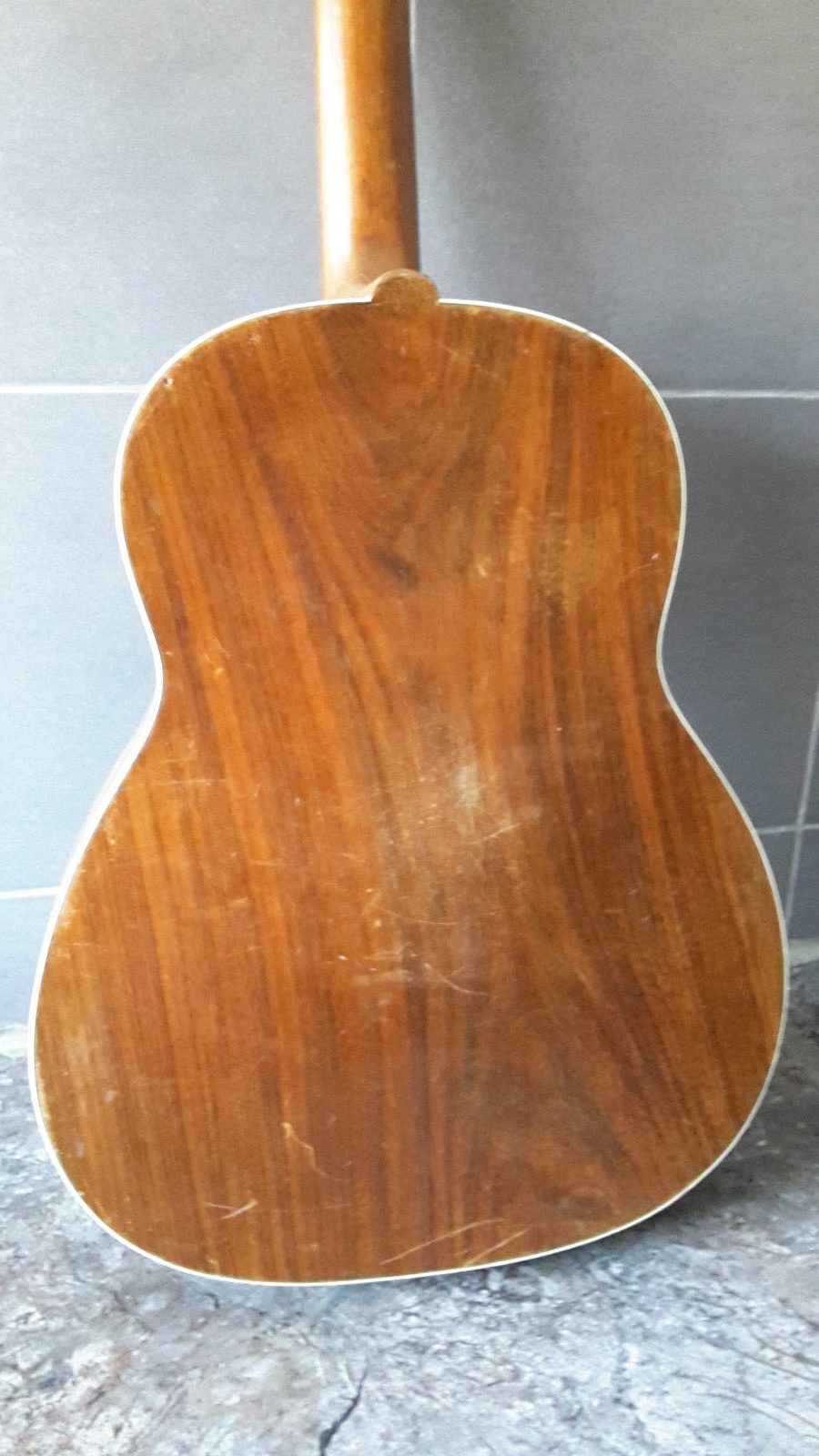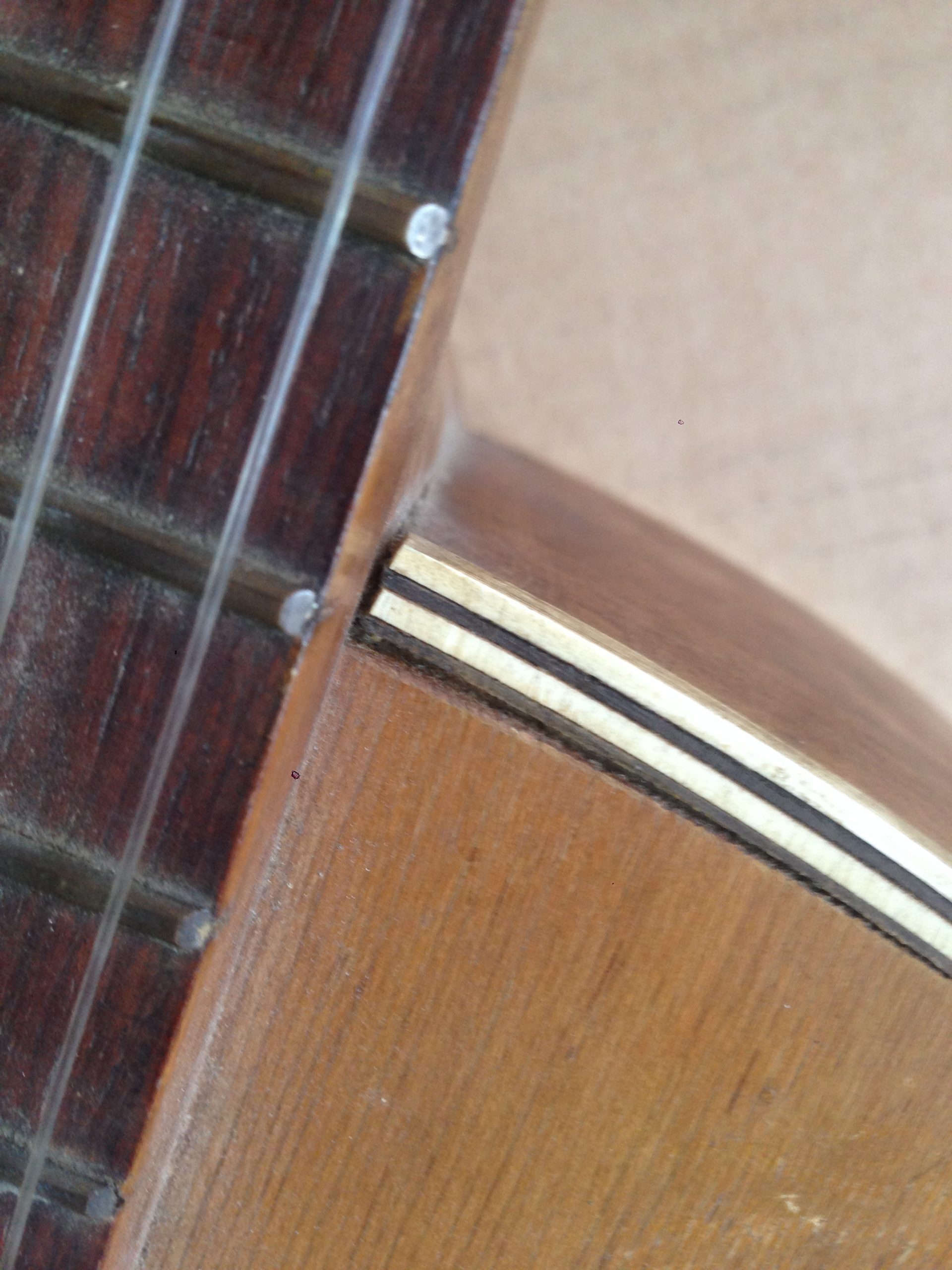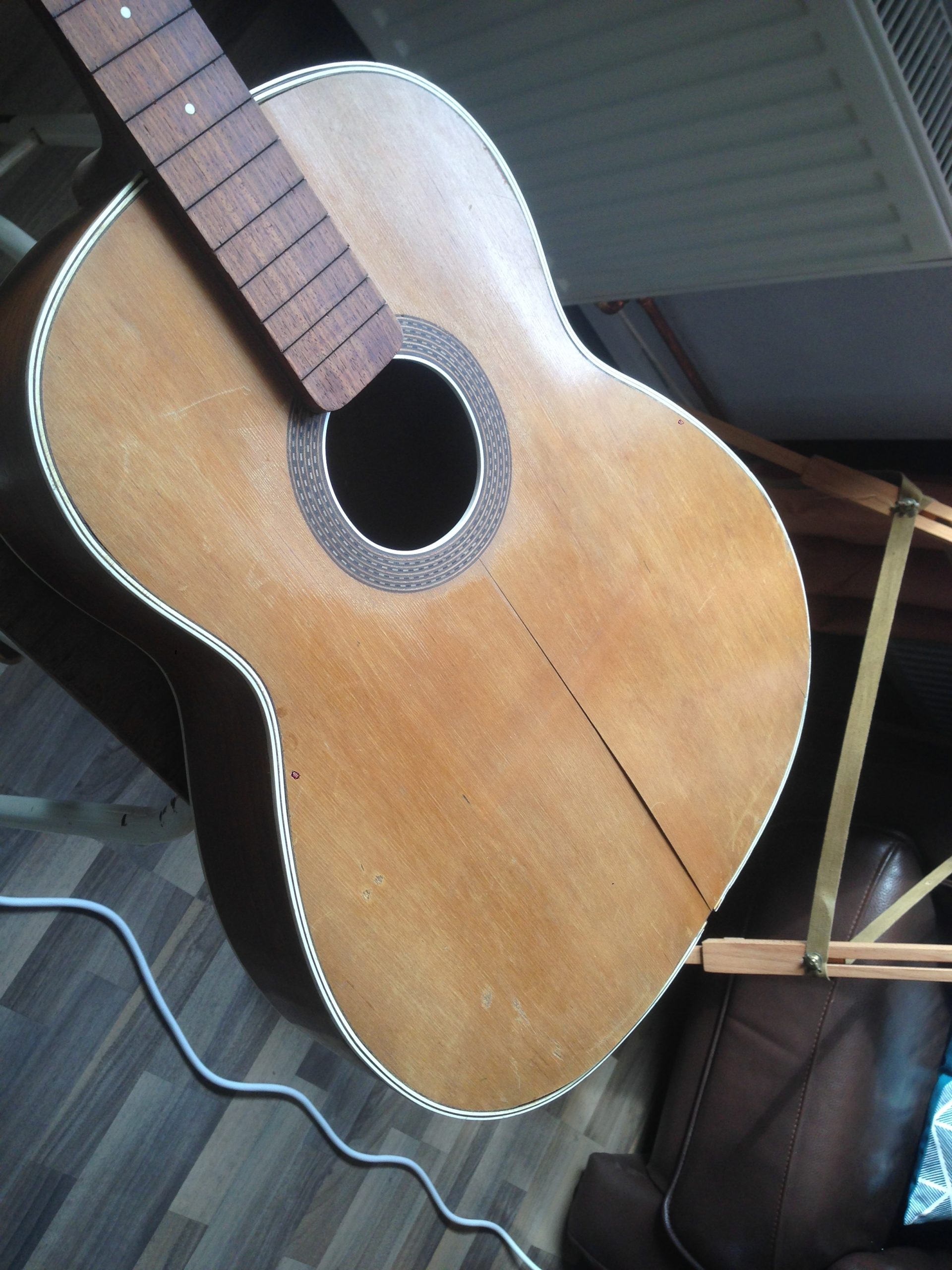The story of this guitar as far as my ownership is concerned, goes back about two and a half years. I bought it on eBay ‘for a song’ in France, where it was made – in Paris. As far as I can work out from research, it was made between 1915 and 1920, which makes it about 100 years old 🙂 Masspacher was a retailer and manufacturer, with a shop and workshop and was better known for its accordions. This particular guitar is unusual and quite rare, as they were made in their own ‘artisanal’ workshop and preempted the gypsy-jazz or manouche style, which they also made later on in ‘petit-bouche’ after the Selmer/Macaferri makers in the late 20s and 30s.
It was in a sad state when I received it, damaged from being too long in too dry an environment (centrally-heated?) and as such the wood of the top was split and had shrunk in all directions. I started by stripping it down as far as possible, also removing the frets and the varnish/laquer, so that it could breathe again and the top could take up some moisture from the atmosphere. I made a simple humidifier and hung it in the wash-cellar for months on end in an attempt to humidify it. Here are a few pics of it in it’s condition as I received it back then in 2017? It looks a lot better in the pics than it really was, as the shrinkage was everywhere…
There was a sponge inside the pot which was wetted every day and the whole thing was hung in the wash teller foe a few months, until we left for the UK…



















